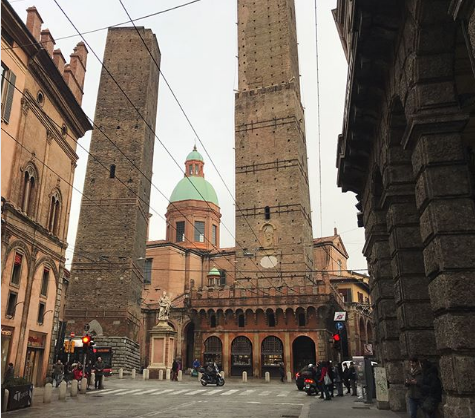2H00’ – Walking tour
In Bologna was established the most ancient University in the western world, a city with an intense cultural life and an important historical heritage : first a urban center for the Etruscans, then for the Gauls and the Romans, was also a Medieval metropolis known around Europe. European Capital of Culture in 2000, was declared a UNESCO City of Music in 2006.
Among Bologna’s
most important symbols are its characteristic porticoes, i.e. the covered galleries that link
all its streets and palaces; the
length of all the porticoes covers 38 kilometers in the heart of town (23.6
miles), 53 kms including the ones outside the ancient walls. Built over a time
period spanning from the 11th to the 20th Centuries, the porticoes of Bologna are
considered an attribute of ‘outstanding’ universal
value, reason for which the city is a candidate on UNESCO’s
Tentative World
Heritage List. Bologna’s
towers also define this great city, the most famous are the Garisenda and Asinelli Towers, TowerAccursi (also known as
the Clock Tower, overlooking Square
Maggiore with its giant mechanized clock) and the Torre Azzoguidi. In
the square there are three imposing palaces : the first is Palace del Podestà, built
around the year 1200, was the former city’s seat of government. The
second, Palace Re Enzo (with the famous Neptune
fountain in front) was constructed between 1244-1246, where King Enzo of
Sardinia, son of Frederick II, was imprisoned for 23 years. Lastly, Palace Comunale (or d’Accursio) was the residence of
the Anziani, the superior legal authority of the Communal
Government; it currently houses Bologna’s Municipal Government.
Be sure to visit the Pinacoteca Nazionale or National
Painting Gallery, with works by artists such as Giotto, Raphael and Carracci;
and the Archiginnasio of Bologna, the ancient seat of the University of
Bologna.



